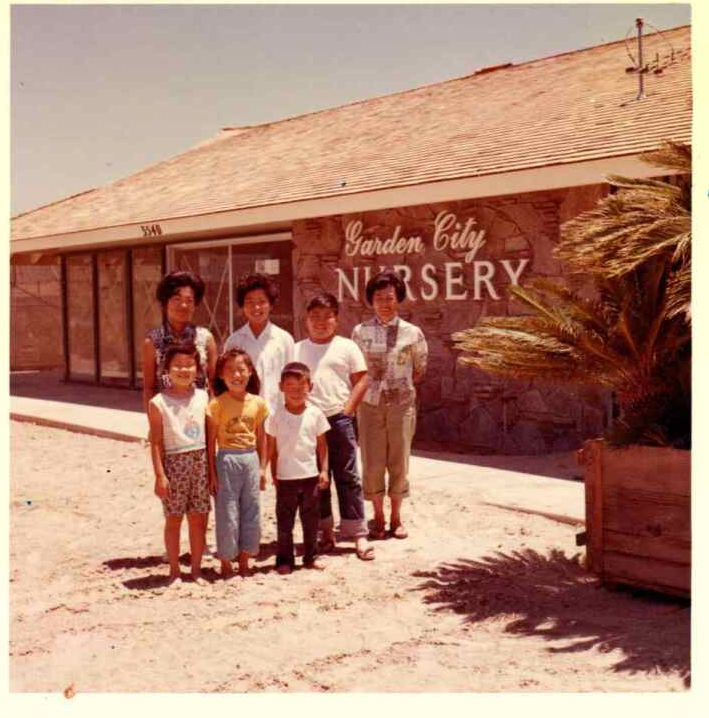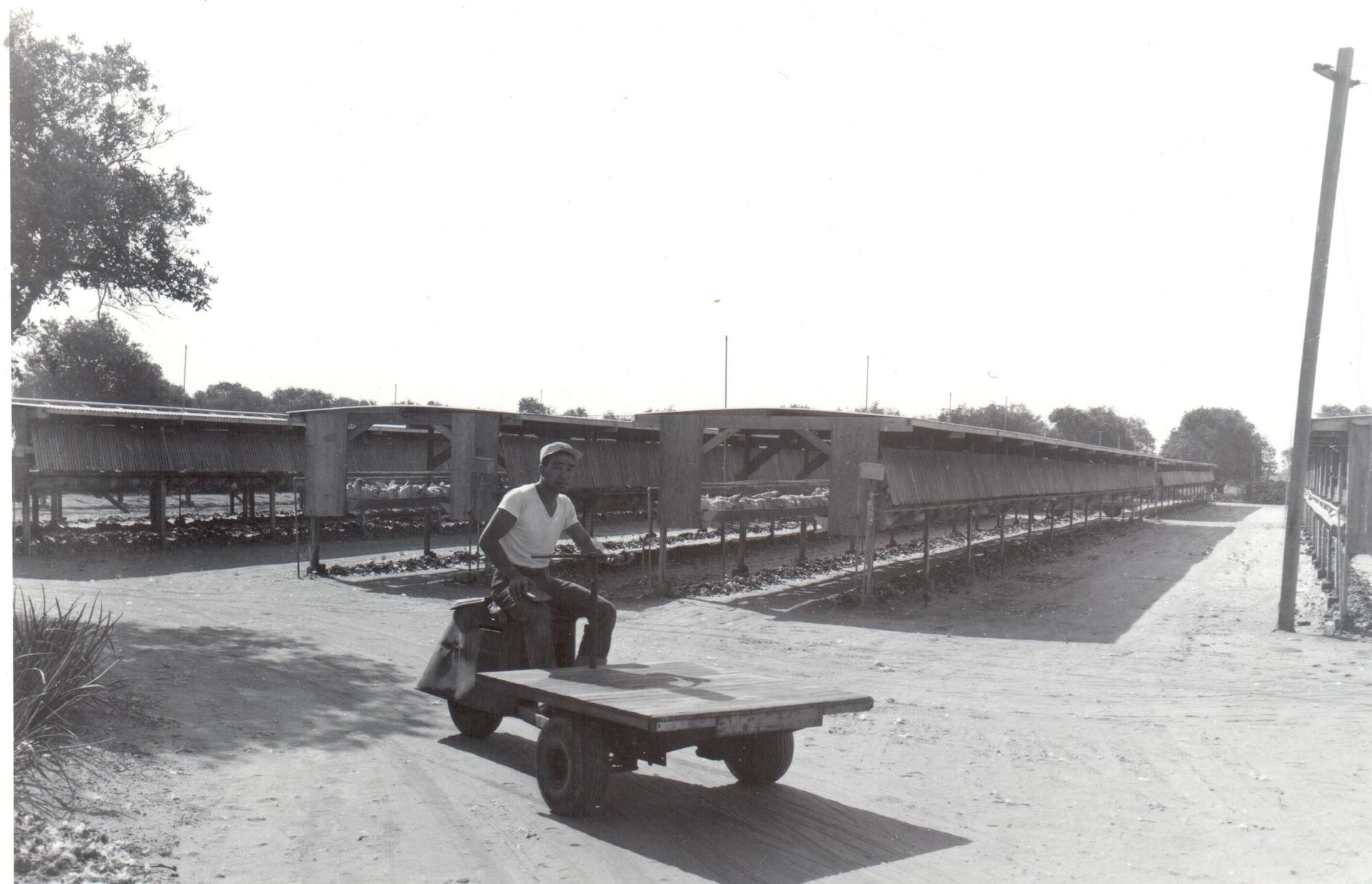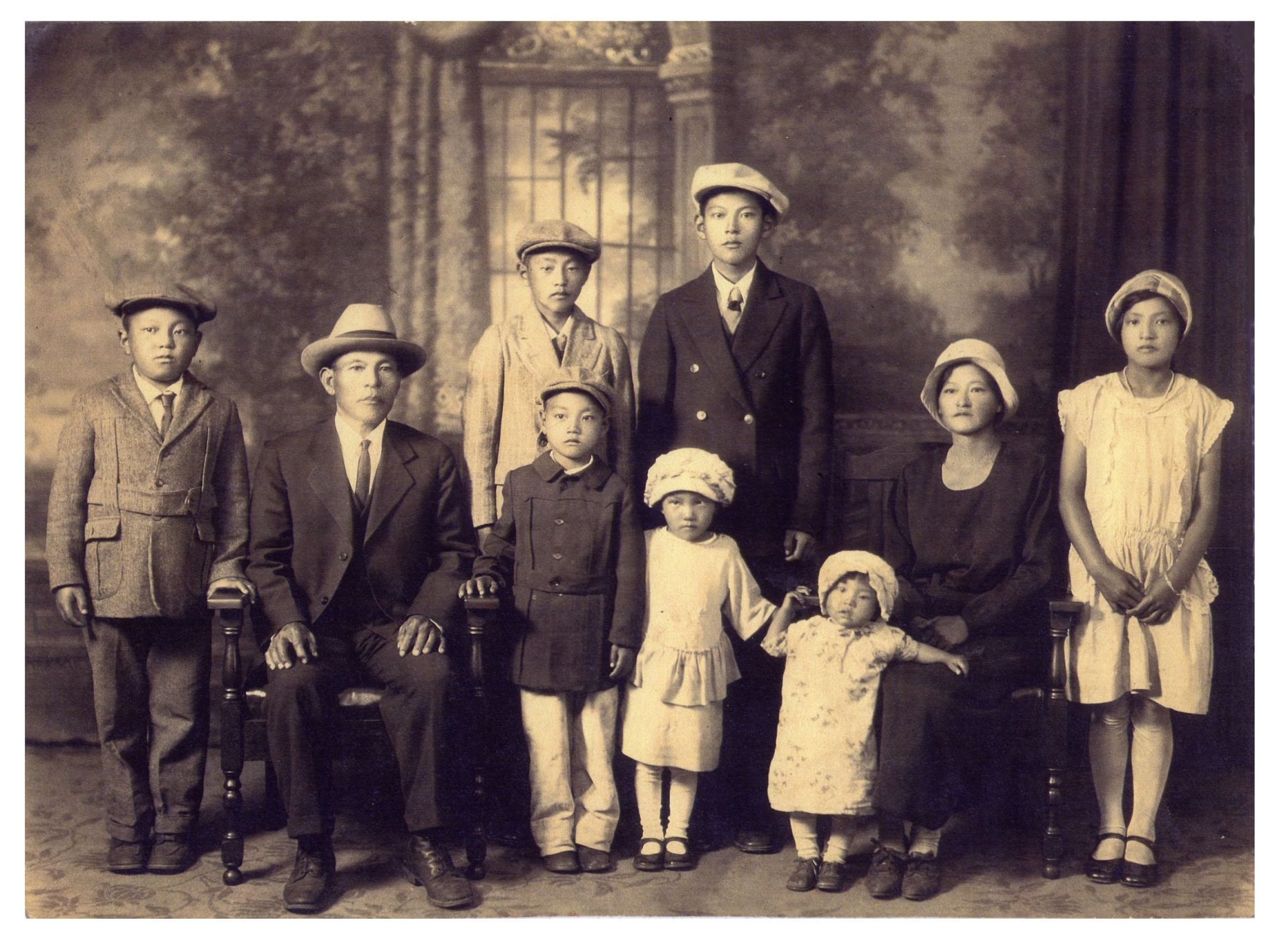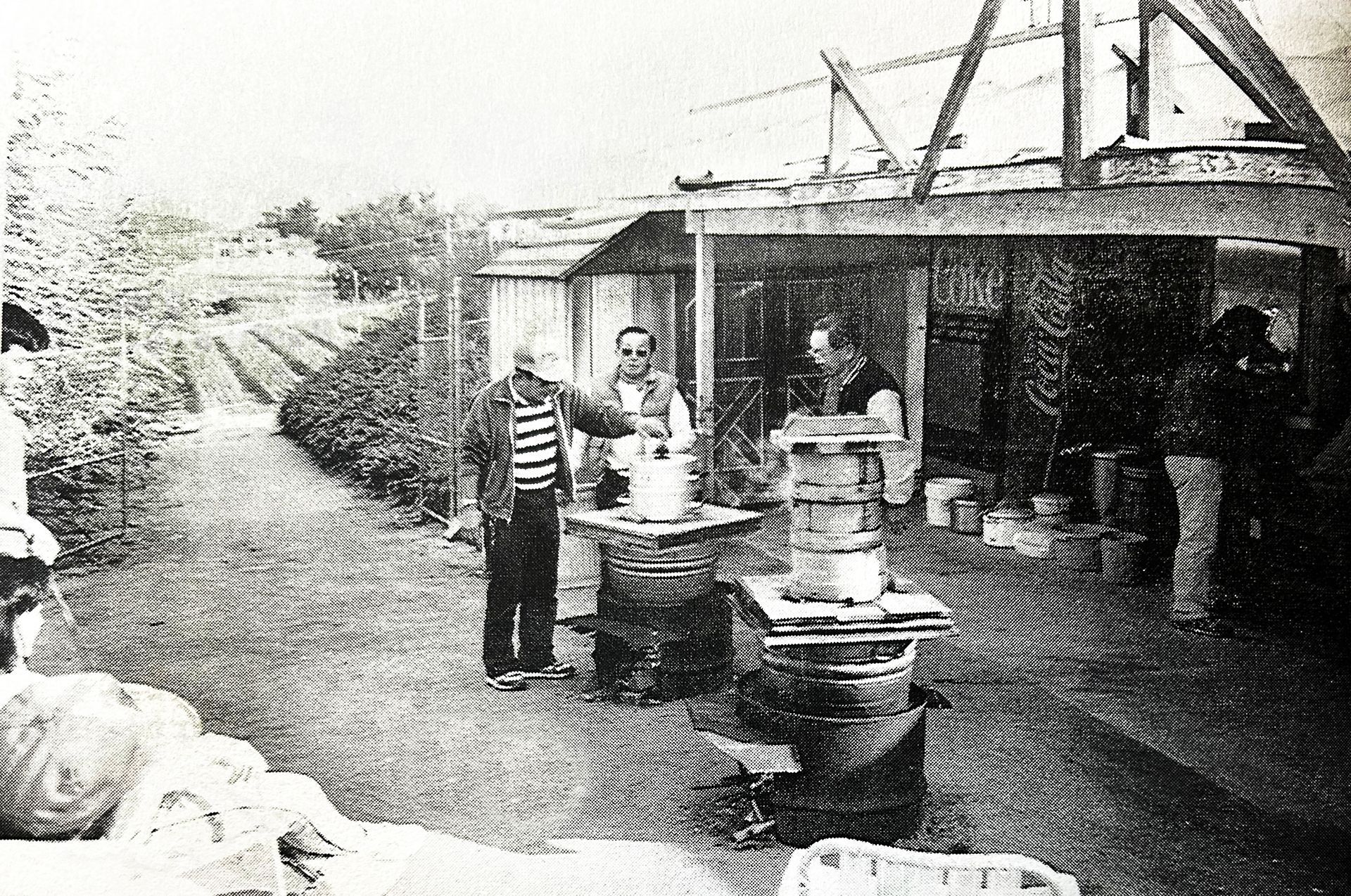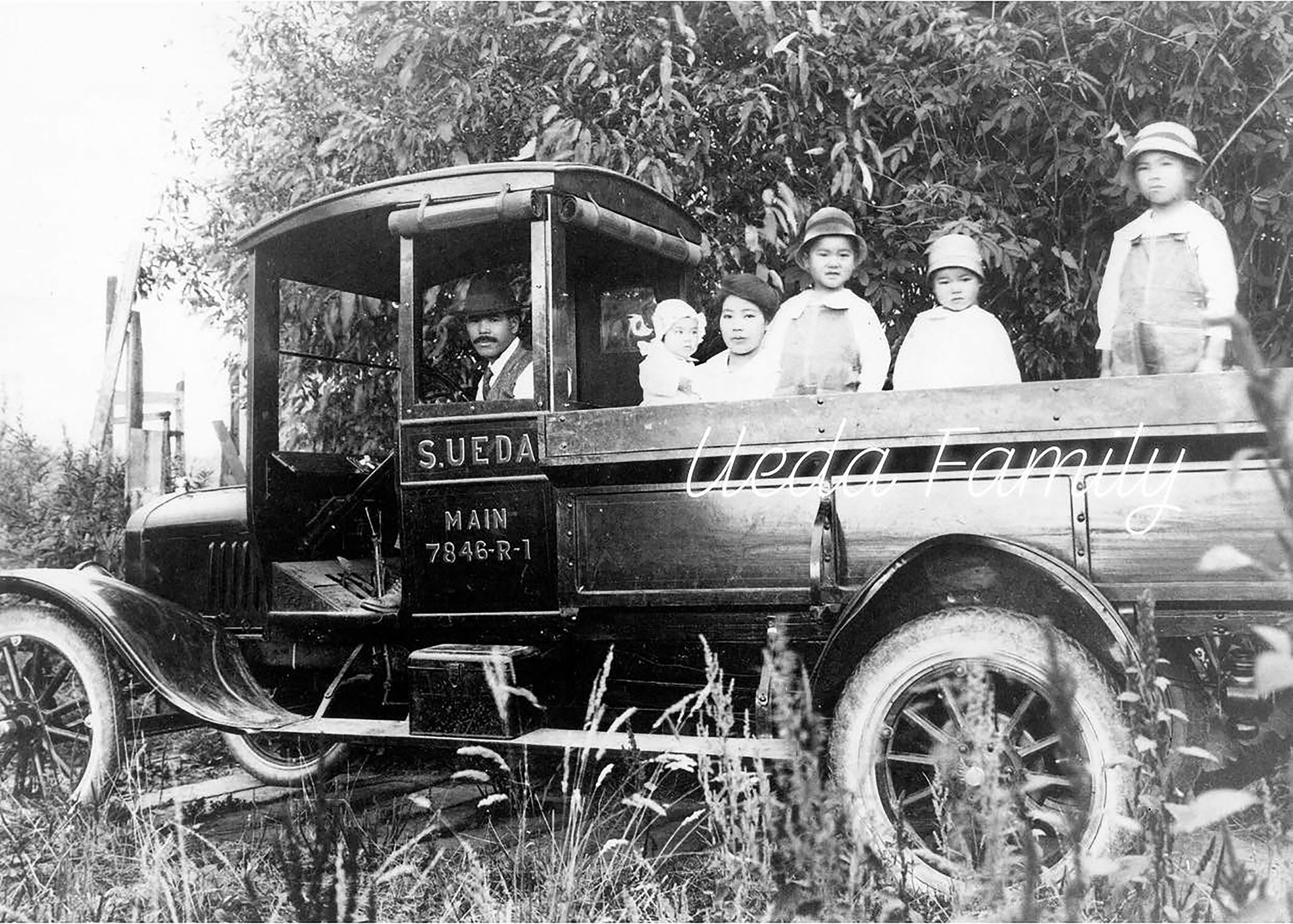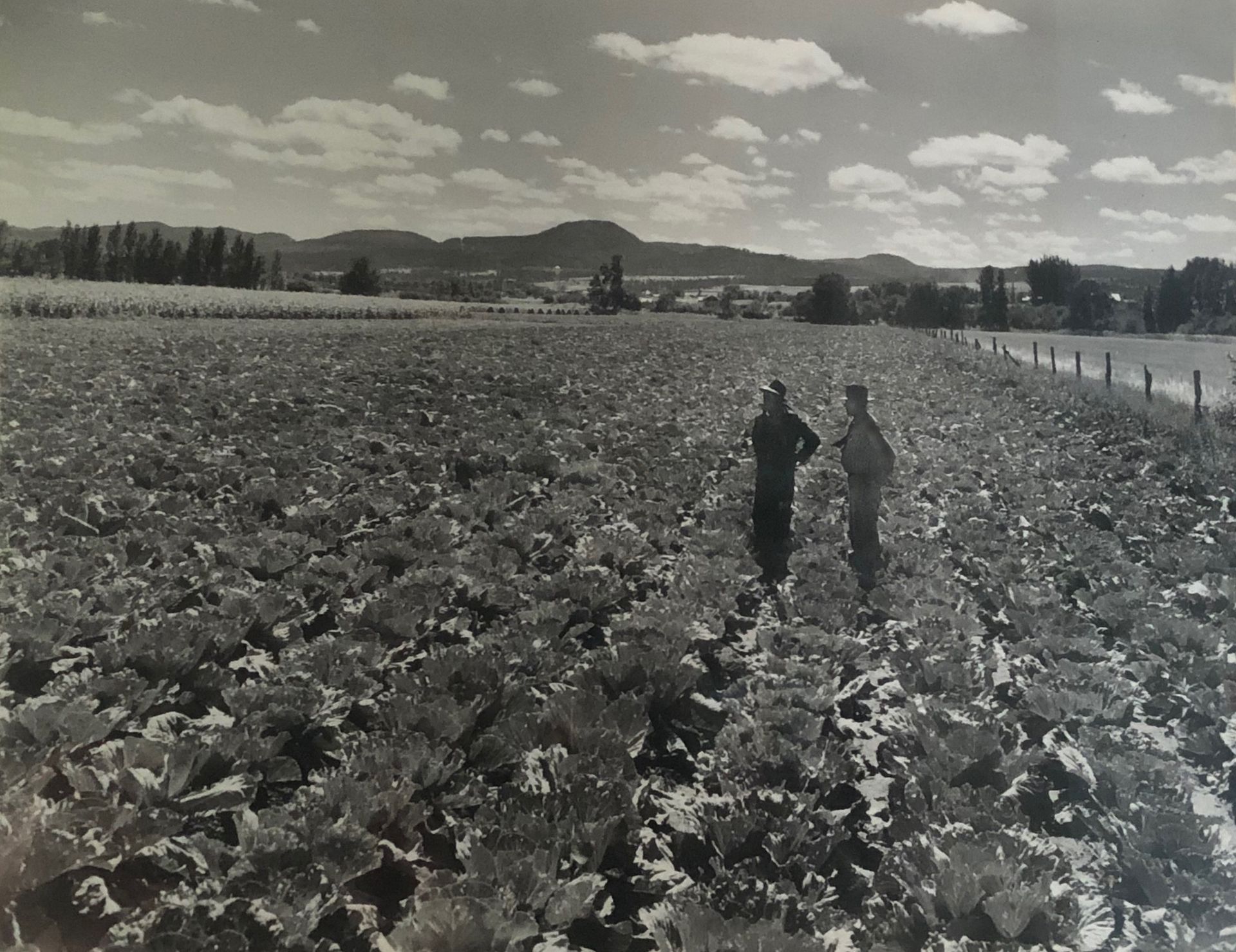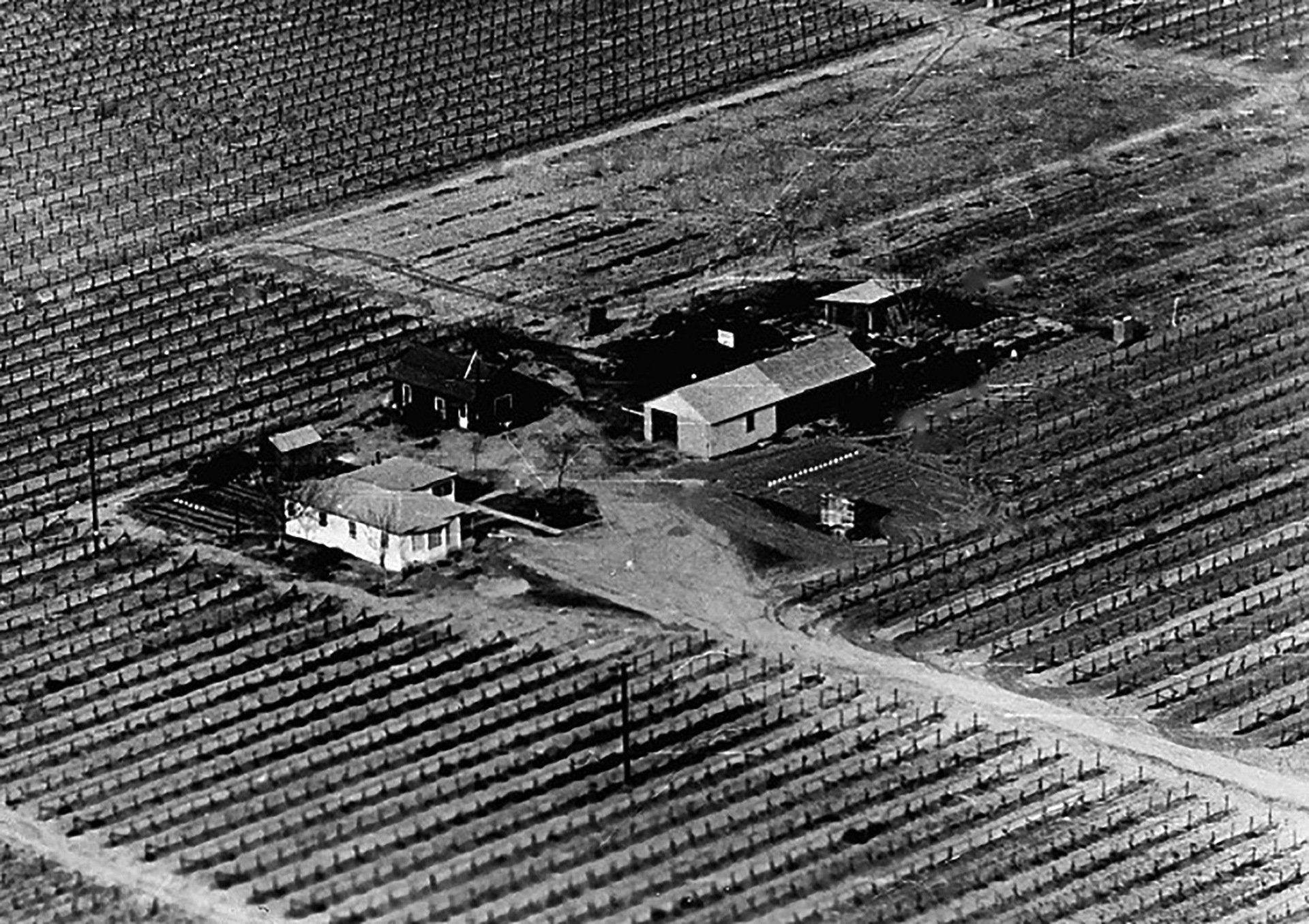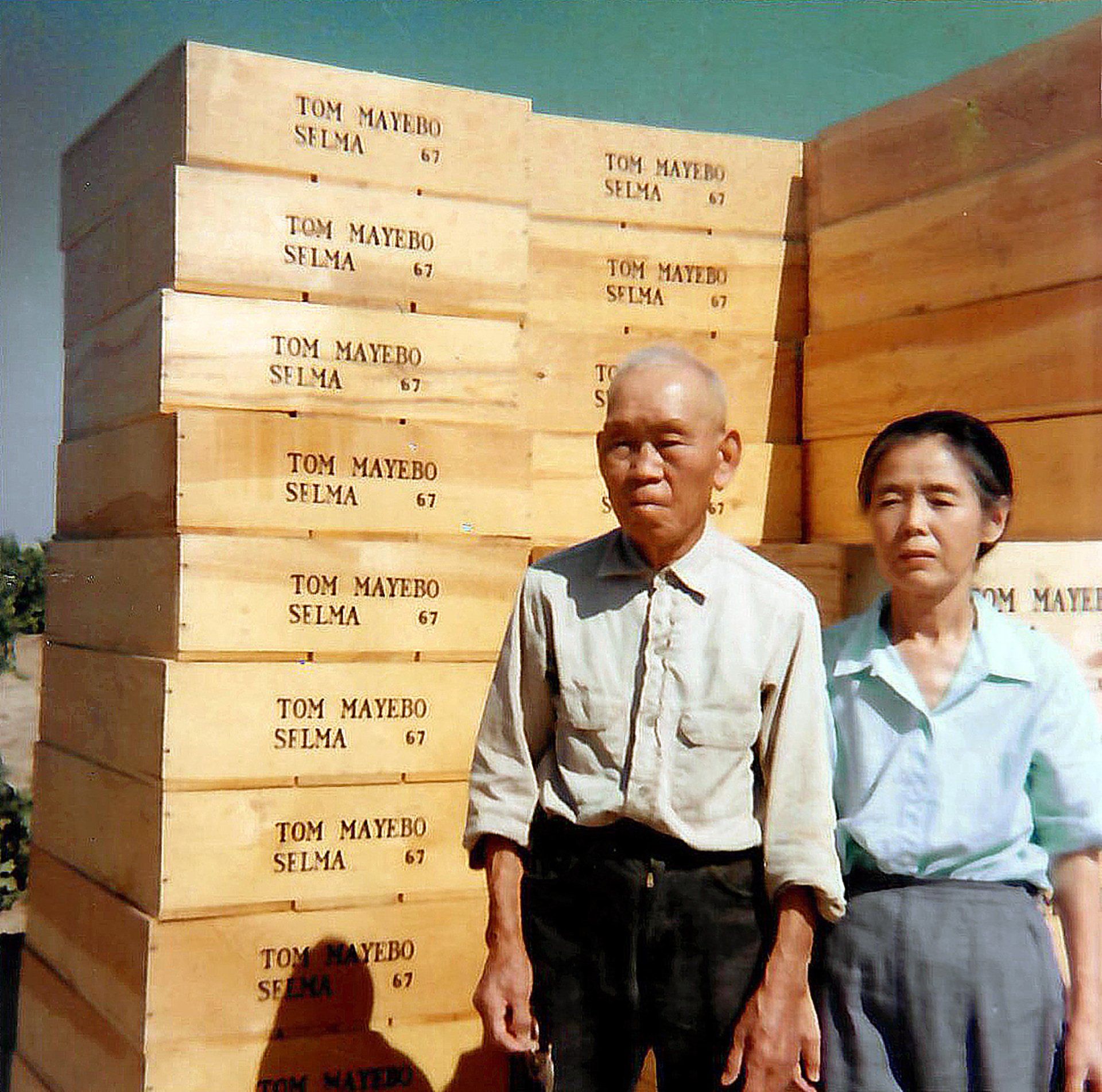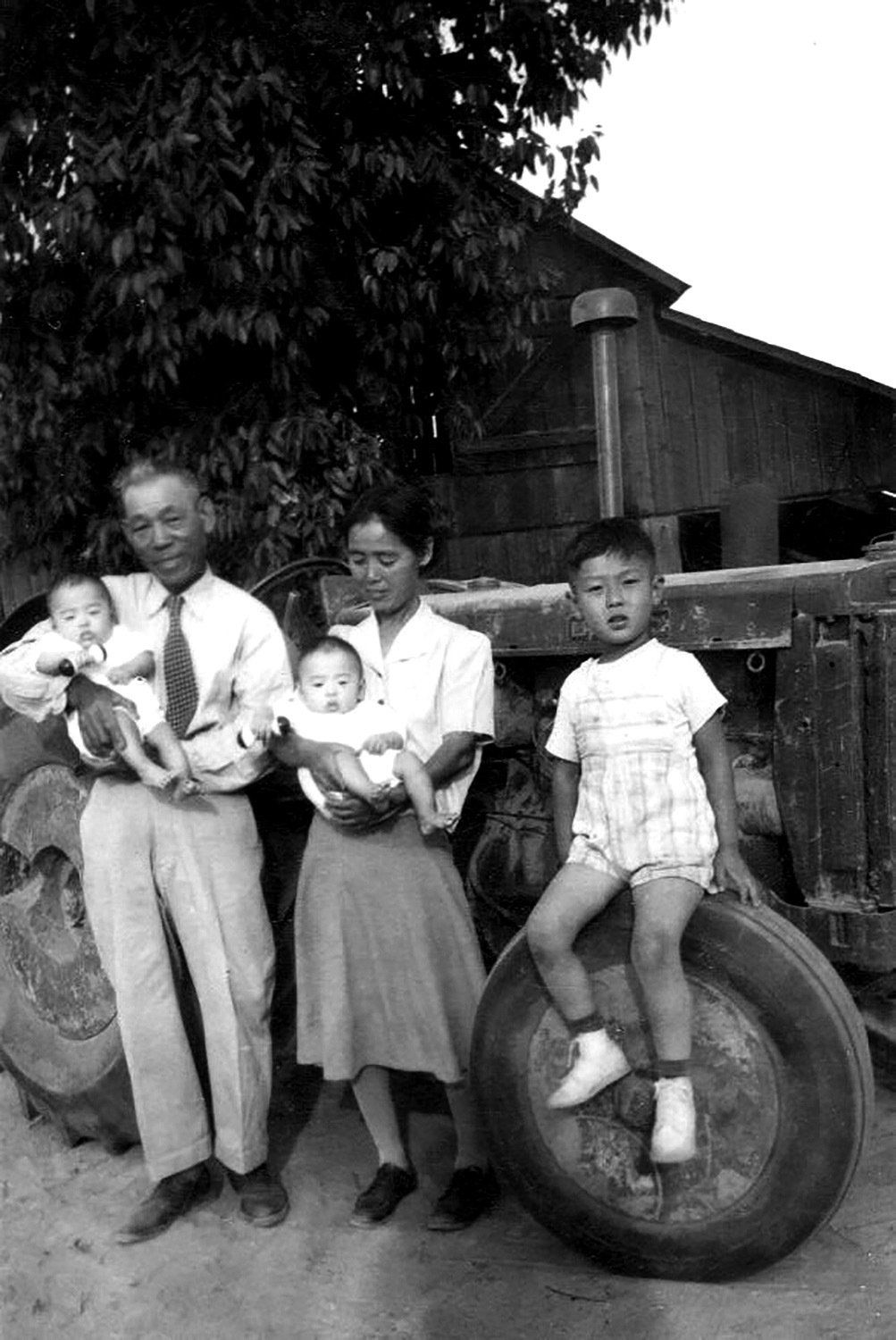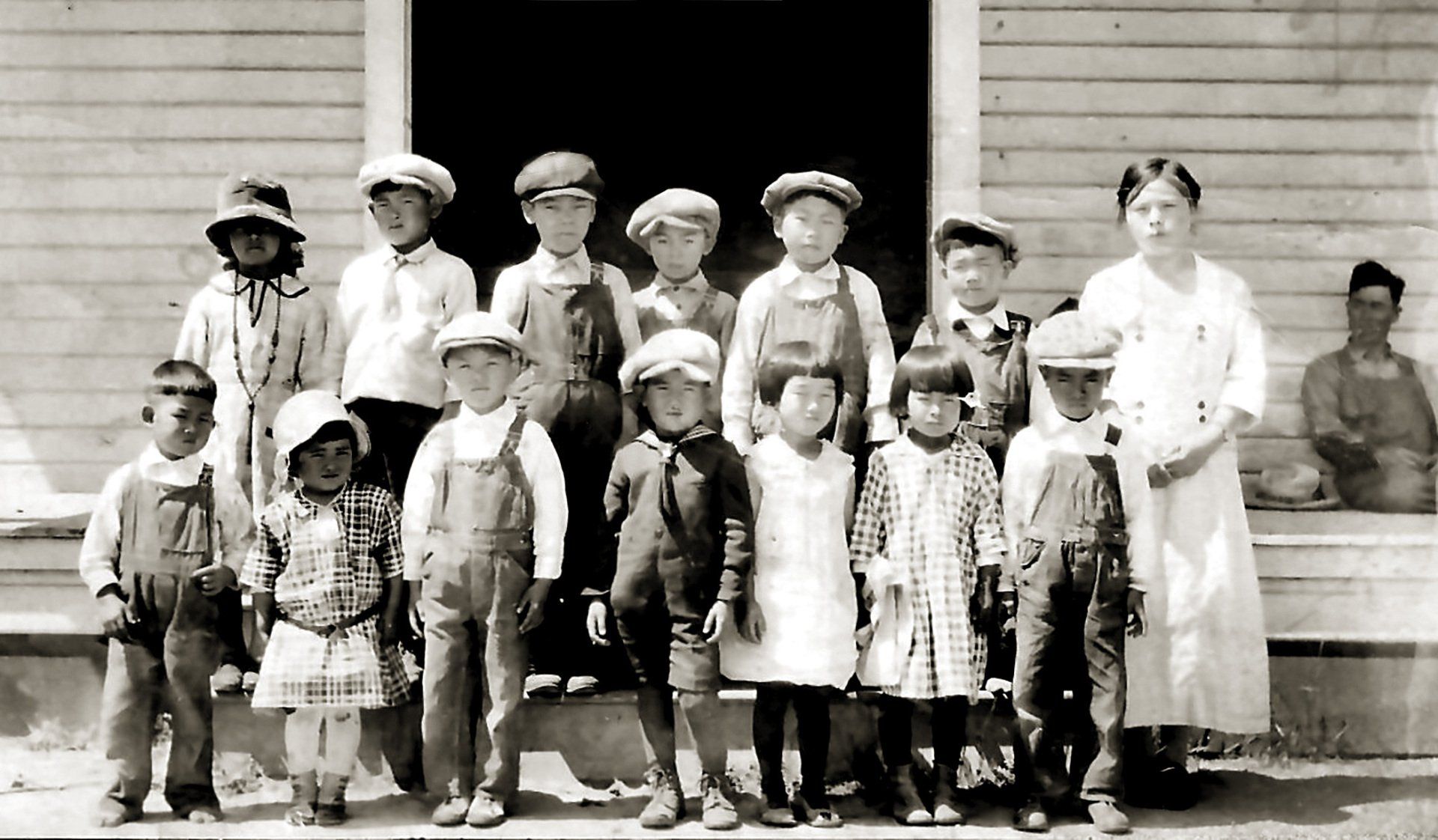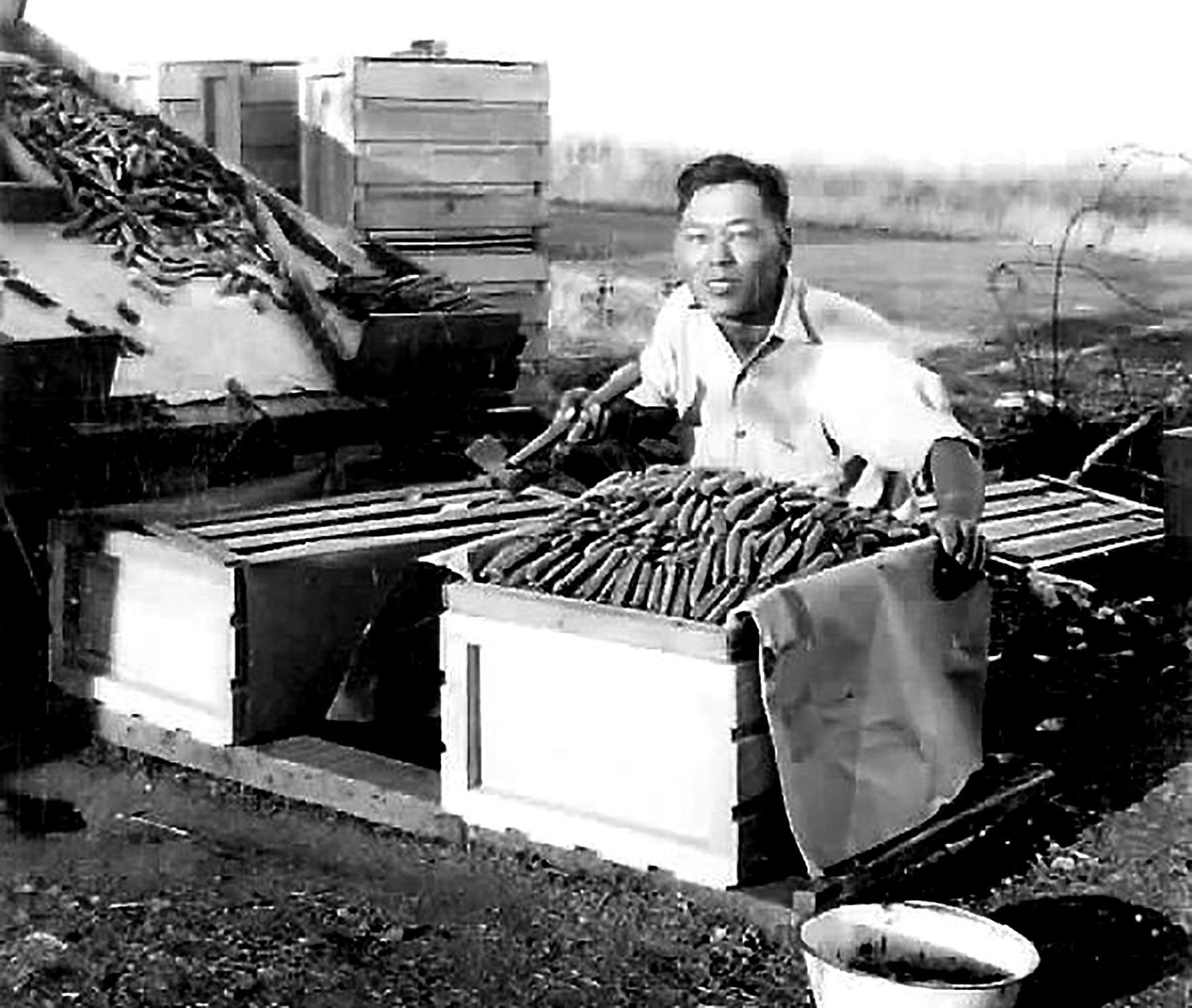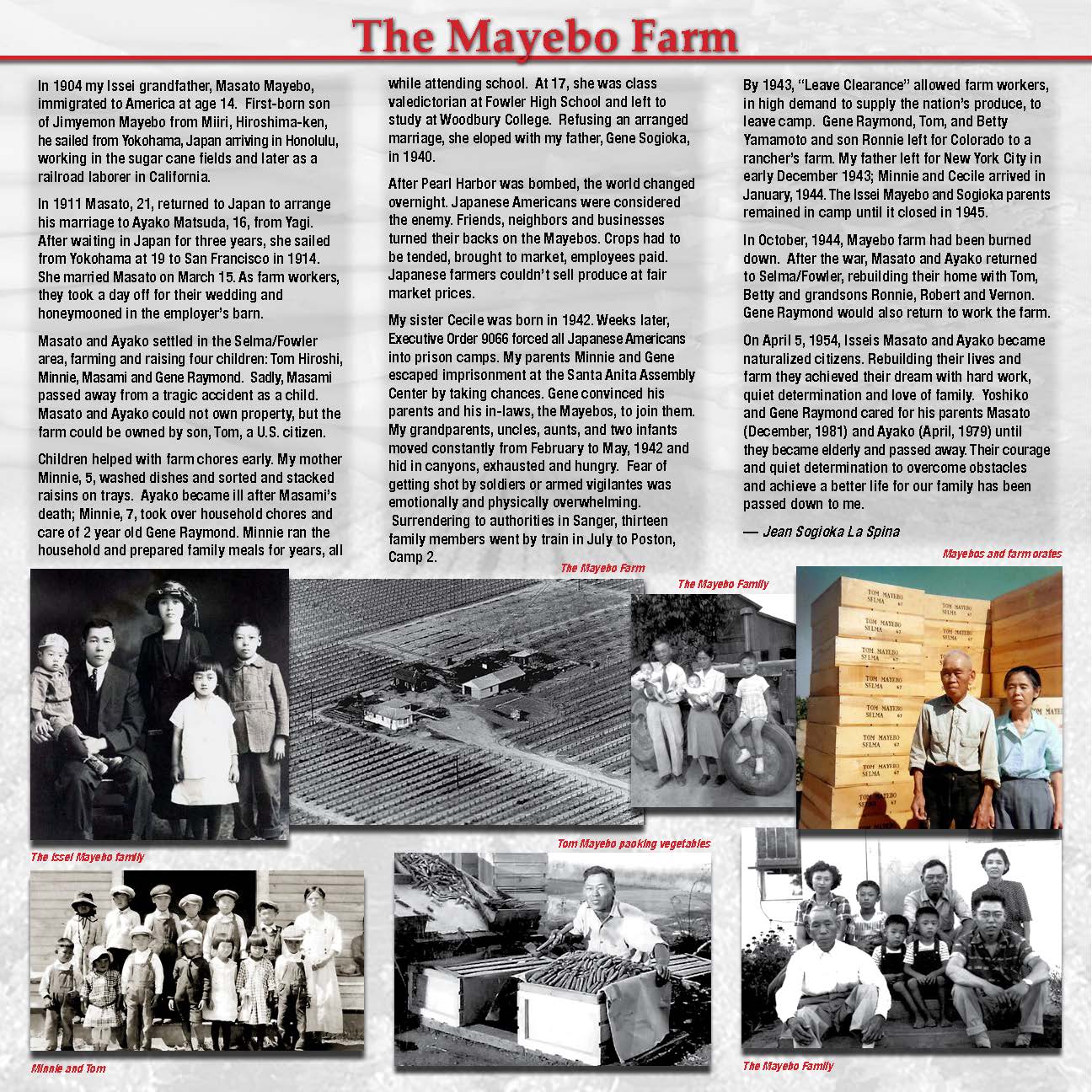The Mayebo (Maebo) Farm
In September of 1904 my Issei grandfather, Masato Mayebo immigrated to the United States at age 14. He was the first-born son of Jimyemon Mayebo from Miiri, Hiroshima-Ken. Masato sailed from Yokohama, Japan on the SS Korea and arrived in Honolulu a week later. Masato worked for seven years in the sugar cane fields of Hawaii and as a railroad laborer in California.
Masato and his childhood friends, Tsuneshichi Taniguchi and Jim Sakoda, immigrated around the same time and settled in California. A formal photo taken in 1906 of the young men dressed in western style suits and shoes signifies how eagerly they adapted to the American lifestyle. Masato was 16 years old.
In 1911, Masato returned to Japan to arrange his marriage to 16 year old Ayako Matsuda from Yagi. He was 21 years old. She would wait in Japan for another three years, gazing at his formal betrothal photograph; a young and handsome Masato attired in a suit, bow tie, shirt and vest, complete with leather gloves.
Ayako sailed from Yokohama, Japan at age 19 on the SS Chiyo Maru to San Francisco in early 1914. She and Masato were married on March 15. They were employed at the time by a farmer. Their wedding was basically a day off from work and a honeymoon in the employer’s barn.
Masato and Ayako settled on a farm in the Selma/Fowler area, where they worked together and raised four children: Tom Hiroshi, Minnie, Masami and Gene Raymond. As Issei and non-citizens, Masato and Ayako could not own property in California, but the farm could be owned by their oldest son, Tom - who, having been born in California, was a natural born U.S. citizen. Sadly Masami passed away from a tragic accident as a young child.
Masato’s friends, Tsuneshichi Taniguchi and Jim Sakoda, had settled in nearby farming communities with their families. The friends visited each other regularly; and their children became friends and attended the same Buddhist temples and community centers.
In a formal family photograph Masami is seated on Masato’s lap wearing a cap with a Buddhist symbol. The Mayebo family is posed and proudly dressed in their best American style clothing. This photo symbolizes their achievement of the American Dream.
As soon as the children were old enough, they were expected to help out with the farm chores. My mother, Minnie, started washing dishes as well as sorting and stacking raisins on trays, at age 5. When Ayako became ill after Masami’s death, Minnie at age 7 took over the household chores and the care of 2 year old Gene Raymond. Minnie did her farm chores and ran the household, preparing meals for the family, for several years, all while attending school.
Minnie graduated from Fowler High School in 1935 at age 17 as Valedictorian of her class. She did not tell her parents that it would be customary for her to wear a white dress for the graduation as she felt it was extravagant. But she also broke with Japanese tradition, leaving the farm to study dressmaking and fashion at Woodbury College and supporting herself as a nanny. Minnie refused to commit to an arranged marriage and eloped with my father to Las Vegas on August 18th 1940.
December 7th, 1941 Pearl Harbor was bombed and the world changed over night. All Japanese were looked upon as the enemy. Some friends, neighbors and businesses would turn their backs on the Mayebo family. Crops still had to be tended and brought to market, employees paid. Japanese farmers could not sell their produce at fair market prices. Their backs were to the wall.
A month later my sister, Cecile was born on January 5th 1942. Weeks later on February 19th, Executive Order 9066 would force all Japanese Americans into prison camps. The Mayebo family had little time to prepare as bank accounts were frozen, the farm business, stock, equipment and pets had to be secured for the duration of the war. They were forced to sell personal possessions for a fraction of their value and their hard earned produce left to rot in fields.
My parents decided to run away to avoid imprisonment at the Santa Anita Assembly Center, located eight miles down the road from the Sogioka farm. Believing in taking chances, Gene convinced both his parents and his in-laws, the Mayebos, to join them. My grandparents, uncles, and aunts, including two infants, moved from place to place in February and March, 1942. They hid in canyons during April and May and were soon exhausted, dehydrated and underweight. The constant fear of getting shot by patrolling soldiers or armed vigilantes was emotionally and physically overwhelming. They finally drove to Sanger and voluntarily surrendered to authorities. According to my parent’s 1942 income tax my father earned $125.00 for almost a month’s work at Sanger and $101.00 for his work with Dr. Alexander Leighton at Poston.
On July 14th, 1942, thirteen members of my extended family, ages five months to fifty-six years, my father and twenty-two year old wife, Minnie with six-month-old Cecile were transported by train to The Poston War Relocation Center Camp 2.
Both Masato and Ayako were active in camp activities at Poston. Masato worked in the kitchens and Ayako participated in various clubs and in many War Relocation Authority group photos. She was one of the few Issei women who could read, write and speak English – valuable skills.
By 1943 Leave Clearance allowed changes in the camps. Farm workers were in high demand to supply the nation with fresh produce. Many farmers were now soldiers fighting in the war and the government had imprisoned all of the Japanese farmers in the Western states. Gene Raymond, Tom and wife Betty Yamamoto and son, Ronnie, left for Colorado to work on a rancher’s farm. My father left for New York City in early December 1943 and Minnie and Cecile would arrive by train on January 4th, 1944. The Issei Mayebo and Sogioka parents remained in camp until they closed down in 1945. During the war the Mayebo farm had been burned down on October 18th, 1944.
After the war, Masato and Ayako returned to the Selma/Fowler farm to rebuild their home and farm business with Tom, Betty and grandsons, Ronnie, Robert and Vernon on the Mayebo farm.
Gene Raymond would also return to work the farm with his parents and brother. He later left to join the US army and was the recipient of a Purple Heart award for bravery during the Korean War. On his return Gene Raymond worked as a municipal employee and raised his two-step sons, Jack and Robert Mundy with wife Yoshiko.
April 5, 1954 Ayako and Masato became naturalized citizens. They had rebuilt their lives and their farm and achieved their dream with hard work, quiet determination and love of family. Yoshiko and Gene Raymond cared for his parents Masato (December 30th, 1981) and Ayako (April 5th, 1979 ) when they became elderly and passed away. Their courage and quiet determination to overcome obstacles and achieve a better life for our family has been passed down to me.
By Jean Sogioka La Spina
The Issei Mayebo family
The Mayebo farm
Mayebos and farm crates
Mayebo family
Mayebo family
Minnie and Tom
Tom Mayebo packing vegetables
